This is a copy of Phils post on ME and describes a little background of Hubberdale and why we intend to start work on this project againThe project to clear the sough was not originally my project but I was involved and have been keen to restart the project for some time now.
I have attached an annotated Google Earth image to illustrate what I am describing.
Hubberdale has been of interest to many people for many years due to the number of veins and mines crossed by the sough and, of course, the supposed existence of the large caverns on the Hubberdale Pipe vein. (‘300 yards wide and as high as Tideswell Church’).
Previous investigations have failed to find a way into either the pipe or the upper reaches of the sough as all supposed connections now lie under water – not far under water but under water never-the-less.
Our approach was to try and find our way back up the sough in the hope that we would enable the mine to drain back to sough level and provide access. This was never imagined to be easy or quick but, we thought, worth a go.
The situation as we started was as follows:
Only 1 of the shafts shown on the aerial photo was open – Shaft 7 (or 40’ shaft). The Sough Tail was also buried at that time.
Descending the shaft lead to the sough which was dry and partially full with silt. Crawling upstream for about 150’ led to a point where the water was met, sinking into a fissure in the wall. From here on the water could be followed as, at times, a flat out crawl, before eventually enlarging to walking size. About 800’ in a shaft from above entered (Shaft 8 – or ‘dead sheep shaft) and after about a 1000’ a blockage is reached where the water flows out of a pile of rock in a small rift chamber.
Dead sheep shaft could be climbed upwards up two legs of around 90’ to a blockage.
It was hoped that the blockage could be removed and that the water flow would assist in removing the silt backed up behind to allow access to the next section of the sough. It was decided that better access would be needed to undertake the engineering required to tackle the blockage. This would be subject to a two pronged attack:
1) The sough would be opened to the tail to allow the washing out of the silt that was restricting the passage, making access easier and also assisting the removal of any silt released after clearing the blockage.
2) Dead sheep shaft would be opened up from the surface to allow more direct access to the dig site.
Permission was sought from the land owner and the project commenced. In total the sough tail and 6 shafts were re-opened. Some of these were lined with concrete or steel pipe and some left with the original ginging. In addition a 100’ length of the cut and cover sough tail was found to be collapsed and was replaced with 4’ internal diameter concrete pipe. The Landowner and his son where invaluable at this time and provided loads of assistance both practical and finacial. They purchased all the concrete and steel gas pipe we used and also an old JCB backhoe and an old front loading shovel that were used to excavate the shafts and cut and cover and handle the materials used.
The sough was eventually cleared to the tail and, during a dry spell when the sough was not flowing a pipe was concreted into the fissure in the sough wall and a removable bung fitted to re-divert the water out of the end.
The procedure worked and the sough now flows in winter and has removed a considerable amount of silt. However a few collapses have occurred near the tail and these need clearing as they are backing up water and causing re-silting.
Dead sheep shaft was also attacked and was sunk nearly 90’ through infil to a rift filled with deads, where we lost the way. Shortly after the bottom of the shaft collapsed whilst we were having our lunch on the surface and the dig was abandoned at that time. During the dig galvanised air pipe was installed down the side of the shaft to act as a bucket guide and to provide forced ventilation as the bucket was wound up and down. The buckets were ‘wound’ by virtue of a rope tied to the back of the landowners car, which he drove backwards and forwards across the field for days at a time.
Myself and SteveT visited last night and checked out the situation with all the shafts and I’ll post a description of them all and the required work later and Steve will, no-doubt, post some piccies.
I would say that although the works to the main blockage need to be attacked in dry weather we need to do the repair works at the tail in winter to ensure enough water flow to clear built up silt.
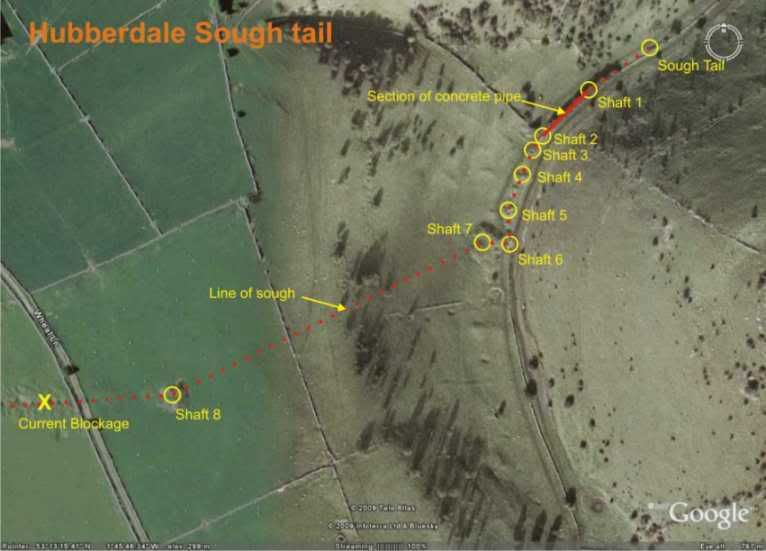
There follows a few photo's from last night's trip to show what it is like in the sough. Not great photo's, just snapped on a compact.
This first shot is the easiest point of entry, shaft 6, and this is where the farmer installed a steel gas pipe and iron ladder.

The iron ladder is rotting away somewhat on its lower rungs

Heading upstream towards the blockage the floor is silted up somewhat and could do with lowering at this point.
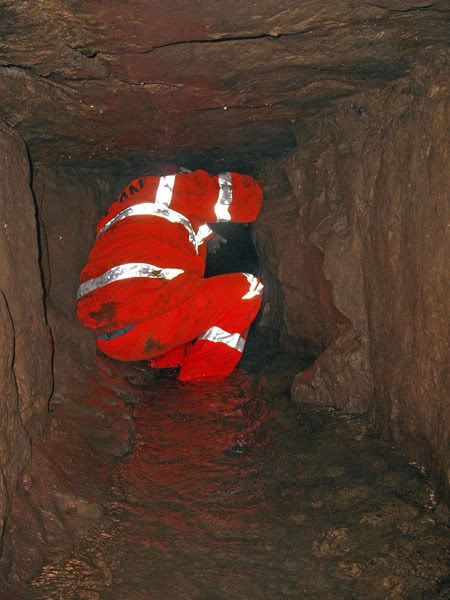
Just a few yards further and the roof should open out. It is here and below the short shafts where the floor needs clearing to increase the water flow and hopefully scour out some more silt over the winter ready for an intense summer project digging further up the sough at Dead sheep shaft.

Heading for a look downstream we come to the concrete pipes bought by and installed by the farmer.
You can also see the walling also done by the farmer. (What a guy! If only all farmers were like this!)

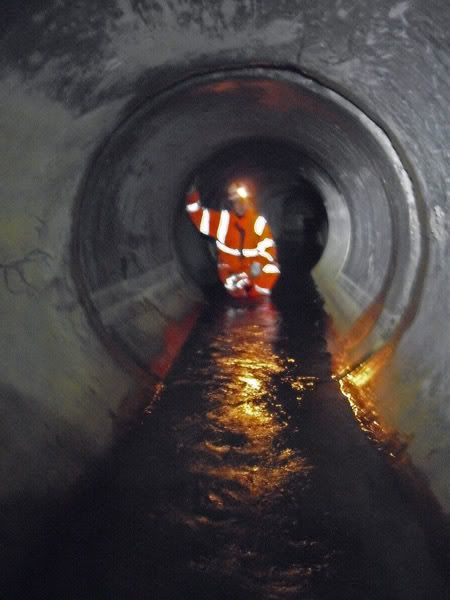

We exit this shaft, back up the ladder and gas pipe
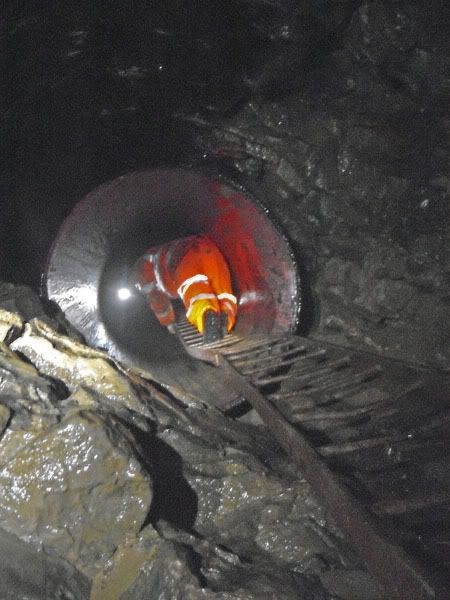
quick look down a short shaft nearer the Sough Tail
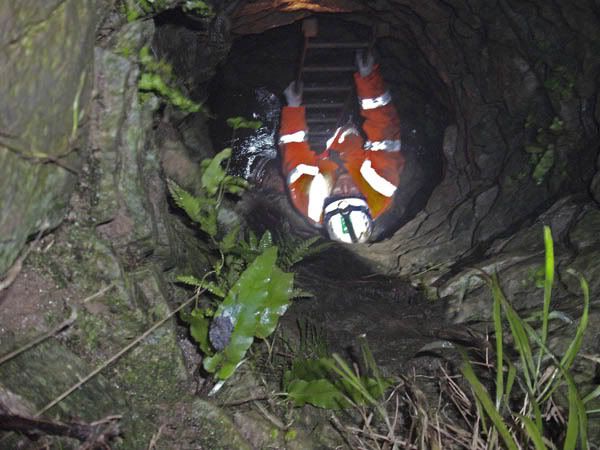
Anyone who wishes to join us with this project please go and sign up here
http://leadmines.conforums.com/index.cgi